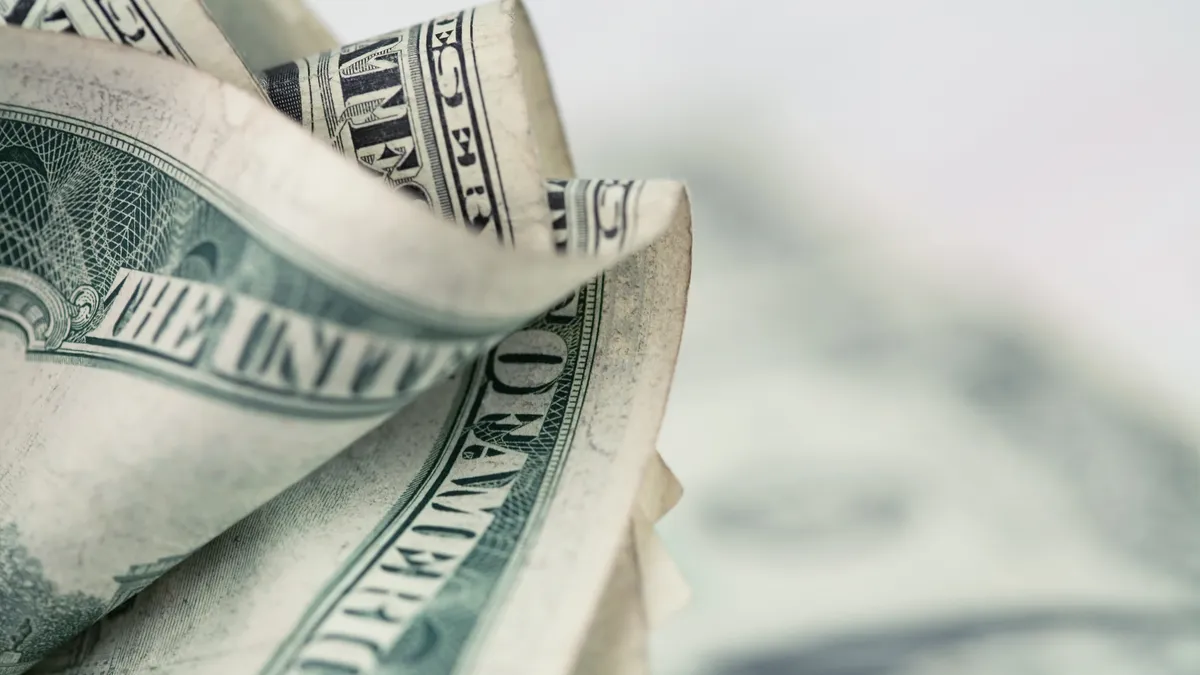Dive Brief:
- The Federal Reserve’s preferred gauge of inflation this year will probably rise 2.7%, the National Association for Business Economics said Monday, citing a median estimate by a panel of economists who in February forecast just 2.2% inflation for 2024.
- Next year the core personal consumption expenditures price index, which excludes volatile food and energy prices, will increase 2.1%, still exceeding the central bank’s 2% target, the NABE said.
- “Survey respondents see the prospect of higher inflation and it could be that FOMC [Federal Open Market Committee] members see upward revision to inflation as well,” Nationwide Mutual Chief Economist Kathy Bostjancic said Monday in a NABE webcast. “We think that slowly but surely you’ll get back to a better inflation picture in 2025.”
Dive Insight:
Fed officials on Monday welcomed a slightly smaller gain in the consumer price index in April than the prior month. At the same time, they noted that, after an unexpected rise in core PCE and other inflation measures during the first quarter, they need more confidence that price pressures will steadily decline.
“The better reading for April is encouraging,” Fed Vice Chair Philip Jefferson said Monday in a speech, referring to a 0.3% rise in core CPI last month compared with 0.4% in March.
Still, Fed economists estimate that core PCE rose at a 4.1% annual rate during the first four months of the year, well above the 2.75% 12-month increase, Jefferson said.
“The numbers have come in for the first part of this year very bumpy and really suggest that inflation is going to come down far slower than I think many had expected,” Atlanta Fed President Raphael Bostic said Monday.
“The issue right now is, when are we going to be certain that inflation is clearly on the path of 2%?” he said in a Bloomberg Television interview. “I think it will take a while before we’ll know that for sure.”
Fed officials in March forecast in a median projection that the central bank this year would trim the main rate in three, quarter-point increments. Data during the first quarter showing hotter inflation than anticipated has prompted some central bank officials to alter their estimate.
“I would not think that that’s still appropriate, because the inflation risks are moved up given the progress on inflation stalled out in the first quarter,” Cleveland Fed President Loretta Mester said Monday, referring to her prior forecast matching the average projection of central bank officials.
“We’re just going to need to gather more evidence on what exact path inflation is on in order to sort of determine whether it’s on that sustainable downward path — the 2% — that we’re looking for,” Mester told Bloomberg Television.
San Francisco Fed President Mary Daly echoed the wait-and-see skepticism toward the trend in price pressures. “I’m not confident that inflation is yet coming down sustainably to 2%,” she told Axios in an interview on Friday.
The risk that inflation will accelerate has increased this year, Mester said, adding that the Fed needs to leave on the table the option of raising the federal funds rate from the current 23-year high between 5.25% and 5.5%.
“There are upside risks,” she said. “My base case is that inflation will gradually move back down but I think we have to be open to the fact that, you know, the economy can surprise you.”
The economy will grow this year at a 2.4% inflation-adjusted rate this year, the NABE panel predicted, 0.2 percentage point higher than their forecast in February.
“There’s going to be continued momentum in the economy, and that momentum is just going to take a while to play through,” Bostic said.












